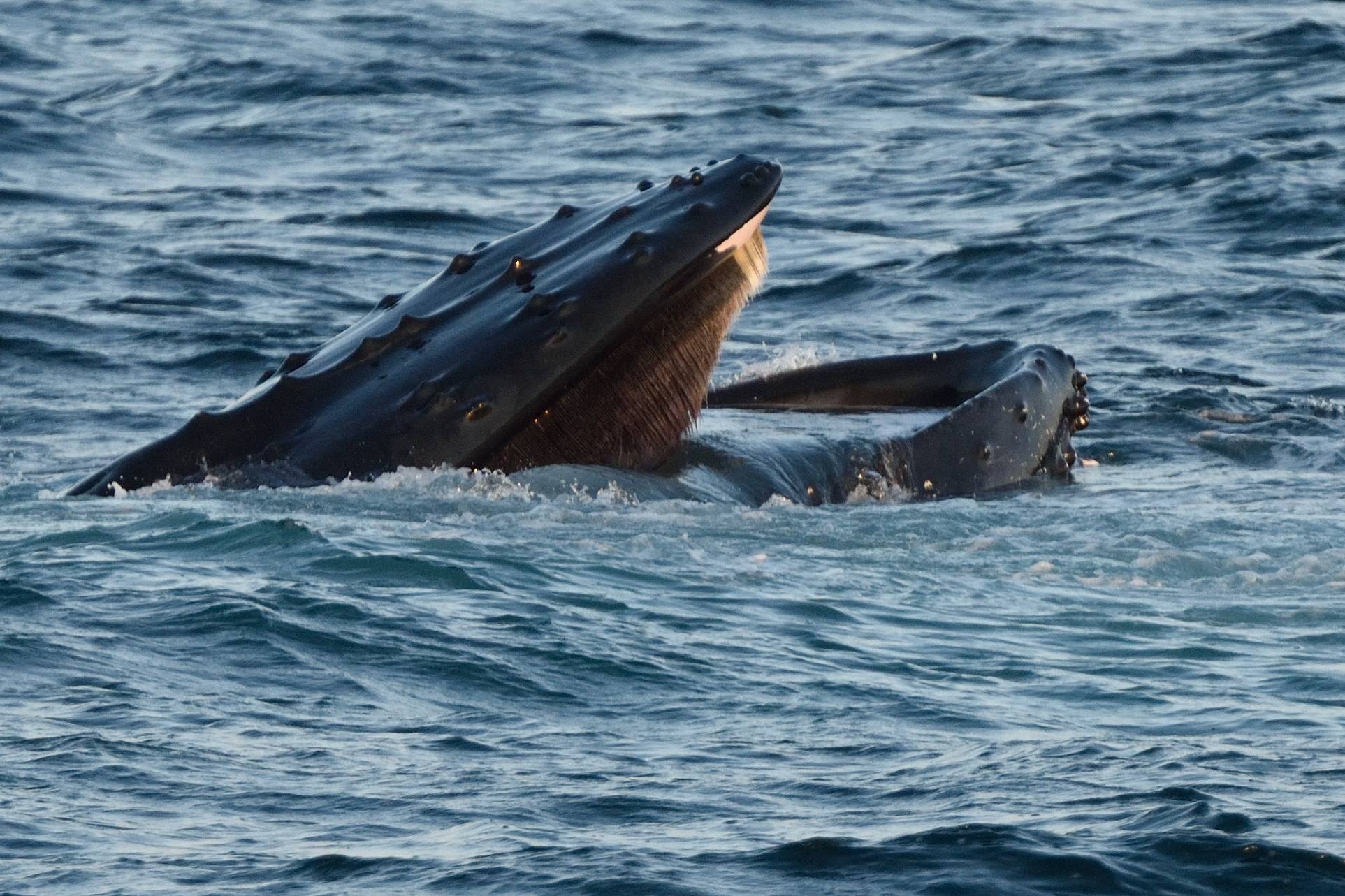How do humpback whales locate food? Scientists need your help to find out
By Erica Cirino, Safina Center Launchpad Fellow
Interested in supporting scientists who study how whales use their ears to find food in the noisy New York Harbor? If so, read on.
When sharks want something to snack on, they rely on their excellent sense of smell. When swordfish want a meal, they use their eyes. When dolphins need food, they use echolocation—alternately vocalizing and listening to locate fish.
But, what about humpback whales, who don’t appear to use their noses, can’t see very clearly in murky water and do not echolocate? How do they manage to gobble down up to 3,000 pounds of krill, plankton and small fish per day? A team of scientists belonging to a research organization called Gotham Whale is studying humpbacks in the waters around NYC now has a hunch.
They think humpbacks are listening—for fish flatulence, says Gotham Whale President and CEO Paul L. Sieswerda.
Humpback whale feeding. Photo: Carl Safina
Menhaden (bunker)—a small silvery fish that’s a major food source for humpback whales—tend to congregate in tight groups called “bait balls” when being preyed upon by larger fish. Buddying up with their fellow fish offers menhaden some protection from predators, since it’s tougher for predators to pick off individual fish from a dense school. To further distract predators, they may use—like their cousin the herring—their GI tract to form a noisy bubble cloud.
Experts at Gotham Whale suspect that menhadens’ defense noises may be directing whales to food. But to prove their theory, they need some help.
“This is an important study and can have major consequences if the acoustic world of whales is overwhelmed by human noise,” says Sieswerda, “and around NYC it’s getting pretty loud.”
As we’ve written previously, other whale experts are studying whale vocalizations and the effects of human-made noise on whale populations in the waters off New York, which, with their heavy ship traffic, are quite loud for whales, who rely on sound to communicate—and possibly to eat.
Another major consideration is the depletion of menhaden, which is, according to Carl Safina, “arguably one of the most important fish in the sea”—as a food source for whales, but also scores of other predatory fish such as striped bass, weakfish, cod and Bluefin tuna; as well as seabirds like osprey and eagles.
Gotham whale currently has a complete team of scientists and partners, including Dr. Edmund Gerstein, marine mammal expert and acoustic researcher from Florida Atlantic University; and Joy Reidenberg, whale anatomist and professor of physiology at Mt. Sinai Hospital. All they need now is a bit of funding to get their team and equipment to New York City.
“We have all the components of the experiment in place, and just need the small amount of funding to bring Dr. Gerstein, and his recording equipment to NYC,” says Sieswerda.
Supporting Gotham Whale can help the scientific community move closer toward this goal. Learn more about Gotham Whale, and how you can help further their research, here. You can also help spread the word about Gotham Whale on Facebook or Twitter, because, as Sieswerda says, “whales, like farts, get people’s attention.”

